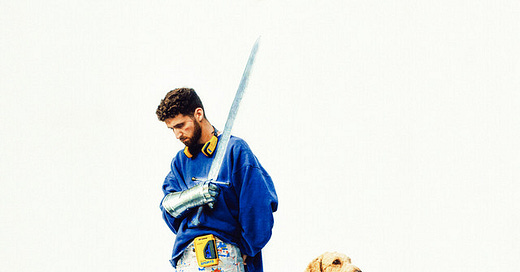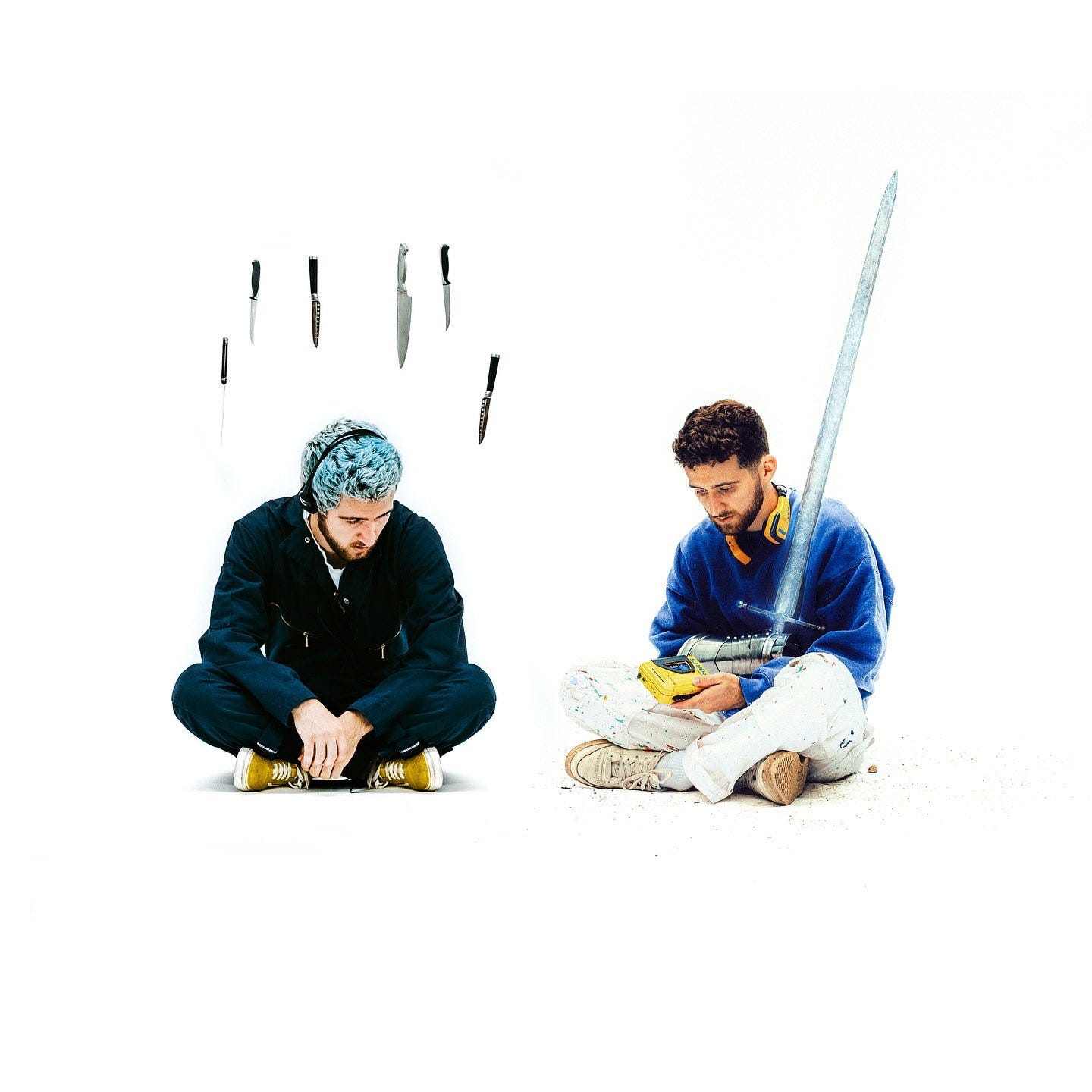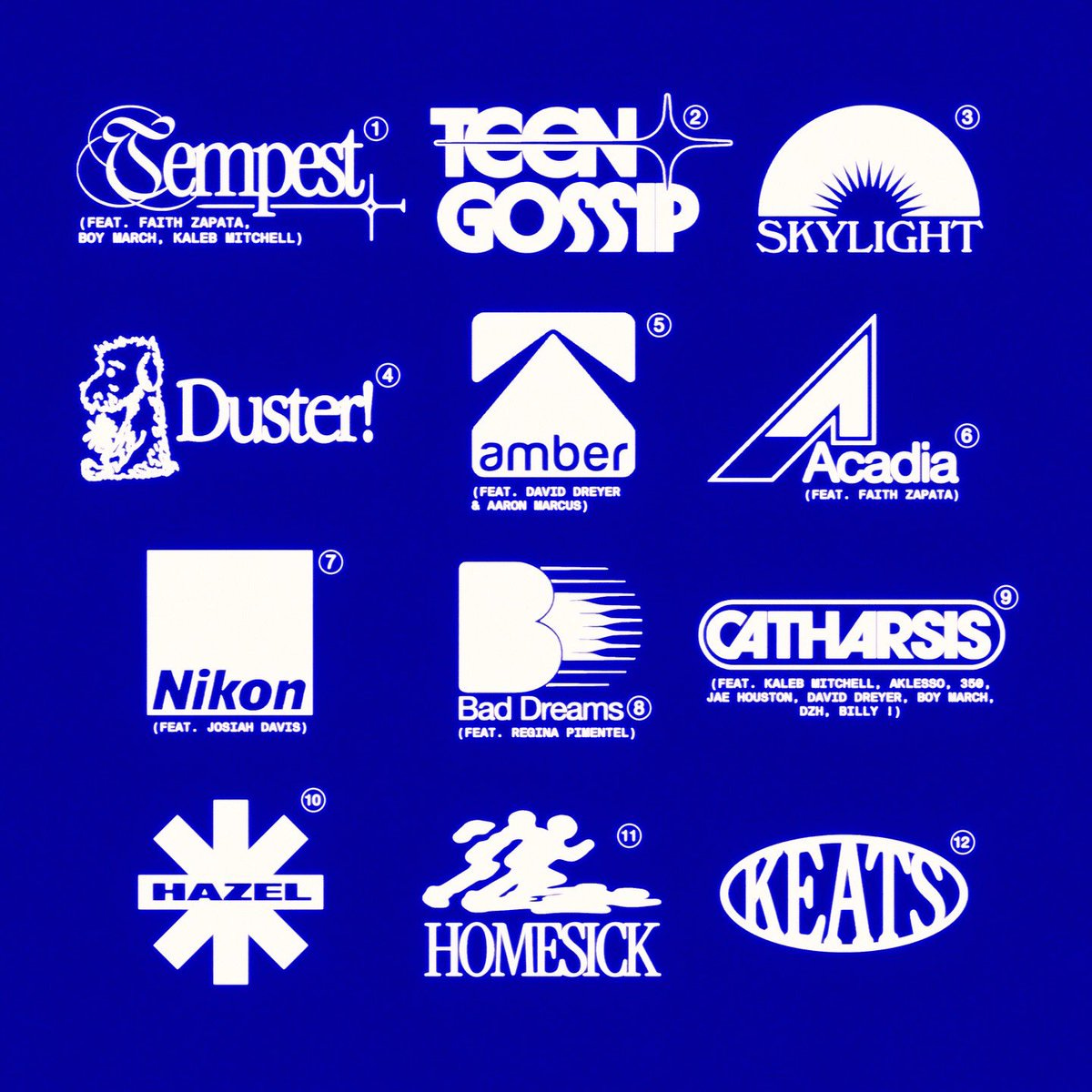Some may know him as the mastermind behind Reach Records’ visual design in recent years, but Kevin Hackett is also a musical artist in his own right. The Canadian artist’s “semi-concept album” INDIGO is the highly anticipated sequel to 2019’s full-length Youth.
This is part 1 of our interview with Hackett. Stay tuned for part 2!
This article originally appeared in Midnight Donuts #5 from October 2024. Want to read the most recent edition of Midnight Donuts? You can do so here!
Midnight Donuts: Jumping right into talking about INDIGO, you did the album trailer and stuff, but for anybody who didn't see that, could you give an overview of what the album is about?
Kevin Hackett: Yeah! I'd say INDIGO is—I use the term “concept album” sparingly, so I like to call it a “semi-concept album.” It's written out of this fictional narrative about this character who loses his memory and is trying to discover who he is. Overall, it's an album about … answering the question “who am I?”
It takes place on this fictional island called “Acadia.” It takes place directly after my last album [Youth], [where] this same character finds himself falling through the sky and hitting the water, using that as a metaphor for growing up. And now he washes up on the shore of this island where he has to find the pieces of himself, and that's expressed through these songs. Visually, the pieces of himself are cassette tapes … that he finds across the island, and each cassette tape represents a song on the project.
BUT without all of that, it's an album about finding who you are.
MD: What would you say is the biggest change that took place for you—either personally or artistically or whatever—between making Youth and making INDIGO? Because they hold together really well, but they're also different.
KH: I think Youth is a look at the external. It's looking at growing up and finding your place in the world and very focused on where you are. Whereas this is more focused on the internal. It's focused on who you are, and that's sort of how my life has changed since Youth. INDIGO is that—I've kind of figured out where I need to be. The external feels like something that I don't struggle with anymore, and now it's the internal of “who am I about to be for the rest of my life?” and the crazy journey that that can be.
Visually, I represented it through the sword. You'll see me with a sword throughout a lot of the project and the visuals, and it's sort of an answer to this narrative I started with Youth. There's this image in the main Youth trailer and one of the single covers where there's knives hanging above me while I'm listening to a cassette tape. It's this image of what my creative passion felt like to me at that time—like, “this could end at any moment,” and it almost feels like I'm playing with fire a bit. I'm like, “I need to figure out what I'm actually going to do for the rest of my life.” There was this end that felt … near, which was represented through those knives.
Now it's like, I took those knives and now I wield the sharp thing. And I am pursuing a creative career in life.
MD: So, talking more about the shift from writing Youth to writing INDIGO, at what point did a second album become a possibility or become probable?
KH: I think with Youth… I knew that another album was going to come. I actually thought it would be earlier than five years later. … I think Youth will always be so special because it did feel like everything led to that up until that point. And it really was a big step for me, but it always felt more of the true beginning rather than “this is it!” type of thing.
I made the Awake After Midnight EP in 2021—2 years after Youth—and that's because literally the day Youth dropped, that's when me and Sophie (my girlfriend) admitted our feelings for each other.
[I] immediately pivoted to writing love songs. I knew that was next. Then, as that was wrapping up, I started getting these specific ideas for songs. And I'm like, “I don't know where they live.” At first, I was like, “Oh, I should do a single run and just see where that goes.”
But then “TEMPEST” happened. … I was at an Anglican church, and I heard this hymn called “Jesus Lover of My Soul.” And it's like, “Jesus, lover of my soul / I'll unto thy bosom fly / while the near waters roll / while the tempest builds inside.” I was like, “Whoa. These are powerful lyrics!”
It felt like it was describing the environment post-Youth. And I was like, “dang, I should work with this!” So, I downloaded the church stream that night and … got the song and everything. I rewrote the lyrics to match the setting of [what] the start of the album would be. From that moment on, it was like, “Ok. I'm making an album.”
That's kind of where it started. Because I knew I had a story that I wanted to continue. And that's all I really care about—telling stories, you know?
MD: I was going to ask—did the storyline or the individual songs come first? But it sounds like you were thinking about writing some songs, then you came up with a storyline that tied them all together. And that's what kind of made you want to get those songs across the finish line?
KH: Yeah… I actually consider Youth to be a linear story. … But this, I set it up so that I can make whatever felt right. … Because the narrative was just, “let me define myself.” … Like, “what's important to me?” Let me write about that. “Who am I?” Trying to just dive into parts of myself, and use that as the key motivation for writing, rather than, “I need to make this song, because at this point, the character does this,” or whatever.
It's just songs that help me remember who I am. And so that means it was kind of a cheeky way to really make any song I wanted to, which felt right.
MD: Given that, how did you decide on the track order? Besides obvious ones like “TEMPEST” being first.
KH: I care a lot about how an album moves sonically, and so “TEMPEST” starts it off with a bang.
And then I knew I wanted track two to be this “start of a movie”-type feel. And “TEEN GOSSIP” coming in with those drums immediately after this huge rap song—coming right in with a fun pop song to me was a really cool switch up. And it also started in high school, which is why I wanted to do that. Because … the earliest thing is high school there.
I knew “ACADIA” needed to be the middle of the album, because it's hype and then goes into a softer vibe. But then I also knew “AMBER” had to be before “ACADIA,” because the end of “AMBER” goes into “ACADIA.”
“NIKON” is the most personal song on the album, and I wanted that to be later. … After I bring these emotional elements into [“NIKON,” the character is close to] remembering who he is.
And that's why it goes into “BAD DREAMS,” which is going into the final climax of “CATHARSIS,” where he finally remembers everything from the past album, and remembers who he is.
So, I guess you could say there is a bit of a linear story there, because “CATHARSIS” is where he remembers. And then everything after “CATHARSIS” is kind of the “what now?”
There was a lot of rearranging the tracklist, but I'd say, as a skeleton, it stayed the same for the most part.
MD: One thing I was curious about is—you mentioned “TEEN GOSSIP” being like the beginning of a movie—I remember seeing when you released “KEATS,” you were like, “this wasn't originally going to be on the album.” Listening through [the album], “HOMESICK” is such a good last track, but it's not the last track. Do you see “KEATS” as like a credits song?
KH: Exactly. Oh, he got it. Yep. “HOMESICK” is the outro. “HOMESICK” is me saying, “this is me now.” This is what I've discovered and where I'm going. It's sonically such an outro.
But “KEATS”—it is [the] end credits. That's the energy I wanted to bring to it. But it also is an essential part of the narrative, where the character leaves the island. … You could have this visual of, like, the character has this tugboat, and “HOMESICK” ends with him hopping onto it and pushing off the shore. And then “KEATS” is the roll credits over him just aimlessly going out towards the ocean, leaving the island.
Stay tuned for more about INDIGO next week! Or reach out to us at midnightdonutszine@gmail.com to read the whole interview in print. Listen to the album here.







